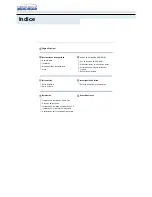
5.5
Inverter output
5.5.1
Motor connection
The motor leads are connected to the terminals: PE, U, V, W. Comply with the motor data (rating
plate) regarding the type of connection (Y or D).
Adjustments in line with the motor in question can be carried out in
“
Motor Setup
”
.
Information
•
A maximum starting current of times 2 of the rated frequency inverter current is possible!
•
For FKDM22 and FKDM50 rated current only possible for motors wih cos
φ
< 0.8.
5.5.2
Disconnection between controller and motor (repair switch)
Ideally, a repair switch should be installed
before the controller
(supply line disconnect).
In the case of complete disconnection (entire load) after the controller, the enable (controller OFF /
ON) must be disconnected simultaneously. I.e., an additional control contact is needed. Switching on
the motor while simultaneously issuing the enable (ON) achieves secure energizing with low satura-
tion of the controller. For this a programming is necessary (
IO Setup Enable ON / OFF).
Attention!
When switching on the motor plus existing release: under certain circumstances, this can occur under
full modulation of the controller.
5.6
Motor protection
Motor protection is possible by connecting thermostats
“
TB
”
(thermal contacts) or thermistors
“
TP
”
(PTC).
•
When several motors are connected ensure that the thermal contacts
“
TB
”
or PTC resistors
“
TP
”
are always connected in series. A maximum of six individual thermistors (DIN 44081 or DIN
44082) may be connected in series to a single device. Depending on the motor type, at least
two or three individual sensors are built in.
•
Monitoring of motors in Ex zones is not permissible. For systems of this type, an additional
posistor tripping unit is required, with disconnection via a separate motor protection circuit.
The unit switches off when a connected thermostat or thermistor has tripped the circuit (interruption
between both terminals
“
TB/TP
”
or
“
TK/PTC
”
. The unit then remains switched off. A programmed
fault-indicating relay is triggering.
Motor fault
Display during motor fault
Possibilities for re-starting after the drive has cooled down terminals
“
TB/TP
”
or
“
TK/PTC
”
by:
•
By switching the mains voltage off and then on again.
•
By simultaneously depressing the three keys:
P
,
▲
,
▼
(if a fault is indicated).
•
By digital input for remote (enable ON/OFF) or by Reset-input (
IO Setup - Digital Inputs).
Attention!
•
An outside voltage may never be connected to the terminals
“
TB/TP
”
and/or
“
TK/PTC
”
!
•
If a bypass circuit is installed, or in the
“
100%
”
position on devices with a main switch, the motor
protection inside the controller has no function. In this case, additional motor monitoring may be
required.
5.7
Signal connection or sensor connection to analog inputs (Analog In 1, Analog In 2)
The unit has 2 analog inputs:
•
E1 Analog In = terminals
“
E1
”
/
“
GND
”
(Analog In 1)
•
E2 Analog In = terminals
“
E2
”
/
“
GND
”
(Analog In 2)
Ensure correct polarity when connecting; a 24 V DC power supply is integrated for sensors. For
sensors in two-wire-technology (4 - 20 mA signal), the connection is made on the
“
+24 V
”
and
“
E1
”
or
“
E2
”
terminals (the GND terminal is omitted). The connection is independent of the programmed
mode and from the sensor signal employed. Place the internal jumper for the external default signal in
the correct position. Factory setting 0 - 10 V (
Jumper for Input signal).
Operating Instructions
Fcontrol
–
model series FKDM..-C
Electrical installation
L-BAL-E057-GB 1304 Index 009
Part.-No. 00163327-GB
12/74













































